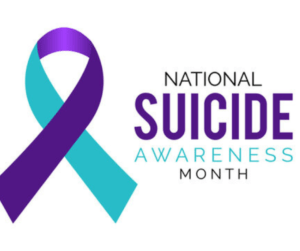Part 1 in a 3 part series: Suicide Awareness Month – Recognizing the Signs, Getting Help, and Saving Lives
Juliet Christensen, LMFT
 September is Suicide Awareness Month, a time to confront a difficult but essential topic. Suicide touches many lives—whether through personal struggles or losing someone we love—and it’s something we need to talk about openly, without fear or stigma.
September is Suicide Awareness Month, a time to confront a difficult but essential topic. Suicide touches many lives—whether through personal struggles or losing someone we love—and it’s something we need to talk about openly, without fear or stigma.
The statistics around suicide are alarming, but they also underscore the importance of awareness, intervention, andsupport. Let’s dive into the facts, recognize the signs, and explore what we can do to help ourselves and others when suicidal thoughts arise.
The Stark Reality: Understanding the Numbers
Suicide is a major public health issue. According to the Centers for Disease Control and Prevention (CDC), suicide was the 12th leading cause of death in the United States in 2021, with over 48,000 people losing their lives to it. That’s approximately one death every 11 minutes.
For certain groups, the risk is even higher. Among young people aged 15 to 24, suicide is the second leading cause of death. The rates are also higher for men, particularly middle-aged men, who account for nearly 70% of all suicides in the U.S.
LGBTQ+ individuals, veterans, and those struggling with mental health conditions like depression and anxiety are also at increased risk. Research shows that LGBTQ+ youth are more than four times as likely to attempt suicide than their heterosexual peers, and veterans are 1.5 times more likely to die by suicide than the general population. These statistics are sobering, but they also emphasize the need for increased awareness, support, and intervention.Suicide is preventable, and knowing what to look for can save lives.
Recognizing the Warning Signs
One of the most crucial steps in preventing suicide is recognizing the warning signs. It’s important to remember that these signs can vary from person to person, but there are some common indicators to watch for in friends, family, and even yourself:
- **Talking about wanting to die or to kill oneself**: This might seem obvious, but it’s often dismissed as just talk. If someone is mentioning death or suicide, take it seriously.
- **Seeking out means to end one’s life**: This includes looking for ways to commit suicide, such as searching online for methods or buying a gun.
- **Expressing feelings of hopelessness or having no reason to live**: When someone feels there’s no way out of their pain, it’s a red flag.
- **Talking about being a burden to others**: This can be a sign of deep feelings of worthlessness or guilt.
- **Increasing alcohol or drug use**: Substance abuse can be both a symptom and a risk factor for suicide.
- **Withdrawing from friends, family, and social activities**: Isolation is a common sign of depression and suicidal thoughts.
- **Experiencing extreme mood swings**: Going from very sad to very calm or happy can indicate that someone has made a decision to end their life.
- **Giving away prized possessions**: This can be a way of saying goodbye or putting affairs in order.
- **Sudden change in behavior, especially if it’s related to depression or a previous suicidal attempt**: If someone who has been depressed suddenly seems at peace, it might be because they’ve made a decision to commit suicide.
If you notice any of these signs in someone you know, don’t hesitate to reach out to them. Ask them directly if they’re thinking about suicide. It can be a scary conversation, but it’s one that could save a life. Suicide is preventable. By recognizing the signs, offering support, and seeking help when needed, we can all play a part in saving lives. And if you’re struggling, please know that help is available, and you don’t have to face this alone.
Your life matters. Your story isn’t over. Reach out, hold on, and let others help you through the darkness.

